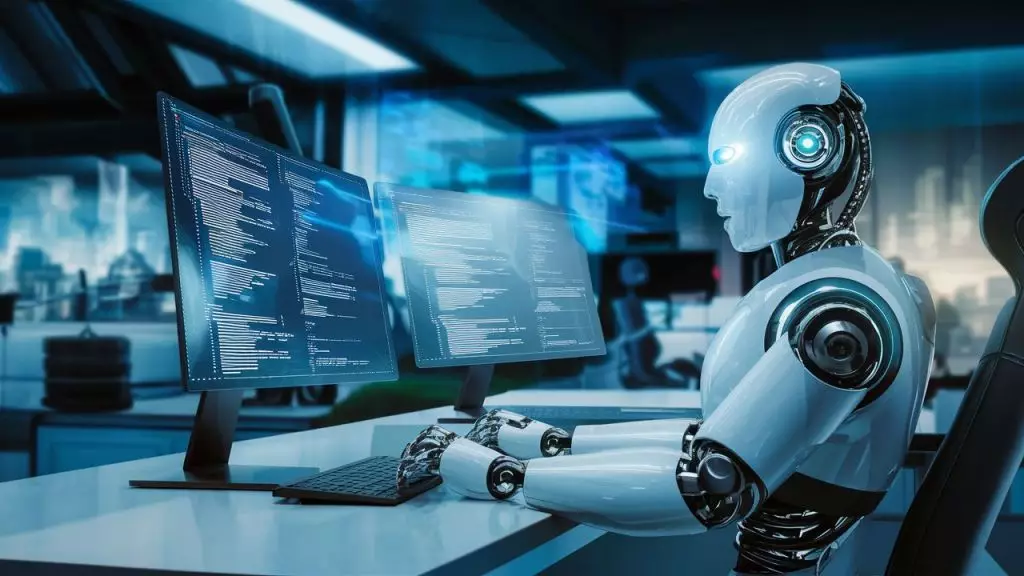The tech world stands on the cusp of a revolution in coding assistance, thanks to the recent unveiling of DeepCoder-14B by the collaborative efforts of Together AI and Agentica. This advanced coding model showcases remarkable prowess, rivaling established giants like OpenAI’s o3-mini. More than just another iteration in coding models, DeepCoder-14B stands as a testament to the potential of open-source innovation, promising to redefine how developers engage with AI in their workflows. By dismantling the traditional barriers associated with proprietary software, DeepCoder-14B offers an inviting pathway for developers at all levels to harness the power of advanced coding assistance.
An Architectural Marvel: Efficient and Effective
DeepCoder-14B is built upon the architecture of DeepSeek-R1, but it brings forth new dimensions of flexibility that are particularly appealing for real-world application in coding. The researchers have made significant strides in optimizing this model, reducing its parameter count to a mere 14 billion without sacrificing performance. This efficiency creates opportunities for applications that require less computational power, making sophisticated coding assistance accessible even on modest hardware. The innovative design not only maximizes operational efficiency but also addresses the growing concern around sustainability in tech, showcasing that high performance doesn’t necessarily have to come with a hefty environmental cost.
Advancements in Training and Performance
The researchers have approached the challenges of training coding models with a fresh outlook. The selection of training data poses a notable hurdle in reinforcement learning scenarios, particularly in coding—a field not saturated with high-quality, easily verifiable datasets like mathematics. The DeepCoder team addressed this persistent issue by meticulously curating a pool of 24,000 distinct, high-quality coding problems. This rigorous filtering ensures that the model interacts with data that accurately reflects the complexities of real-world coding tasks.
Moreover, the team has ingeniously crafted a reward system that helps the model refine its outputs. By ensuring that rewards are only granted when the generated code meets strict criteria—specifically passing comprehensive unit tests—the model is steered clear of learning shortcut techniques. This crucial design choice reflects a fundamental understanding of how AI models can be shaped through training, enabling them to develop genuine problem-solving capabilities rather than simply memorizing answers.
The Impact of Reinforcement Learning Innovations
In the domain of reinforcement learning, the introduction of the Group Relative Policy Optimization (GRPO) algorithm marks a significant leap forward in training stability. While GRPO was a solid foundation, the researchers recognized the need for iterative improvements. Their adjustments have rendered the model more resilient to variations during extended training periods, allowing it to learn progressively as it tackles increasingly complex problems.
The ingenious incorporation of extended context windows—scaling from 16K to 32K tokens—further amplifies the model’s reasoning capabilities. By integrating a filtering mechanism that prevents penalization for producing lengthy reasoning sequences, the researchers effectively preserved the integrity of longer context responses. This strategic approach paves the way for DeepCoder-14B to perform better under challenging scenarios, providing nuanced and detailed solutions that could be daunting for simpler models.
Efficiency in the Training Process: Fast-Tracking AI Learning
One of the standout features of DeepCoder-14B is the innovative “One-Off Pipelining” technique within the training framework. Conventional reinforcement learning training protocols often encounter bottlenecks—especially during the token sampling phase—leading to inefficient resource utilization and extended training periods. The introduction of this pipelining approach has significantly mitigated those inefficiencies, achieving up to double the training speed compared to previous implementations. For developers and researchers, this acceleration translates into a much shorter timeline for deploying effective models.
Through the revelation of these techniques, the researchers have not just advanced DeepCoder-14B; they have also contributed tools—the verl-pipeline extension—to the broader community, further emphasizing the importance of collaboration within the open-source framework.
Democratizing Access to Advanced AI Solutions
The release of DeepCoder-14B underscores a pivotal moment in the AI landscape. Open sourcing this powerful model extends its capabilities beyond the walls of high-profile tech giants, leveling the playing field for enterprises of all sizes. By making advanced coding solutions available, DeepCoder-14B empowers small teams and individuals to implement intelligent code generation strategies without incurring the prohibitive costs typically associated with leading commercial models.
In a broader sense, this democratization of technology heralds an era of innovation, underpinned by open collaboration. As organizations increasingly turn to AI solutions that are both accessible and powerful, the landscape for coding will transform dramatically. The era of complex, proprietary black boxes may soon give way to a thriving ecosystem where innovations are shared, expanded, and refined—setting the stage for an unprecedented surge in creative and technical collaboration across industries.

